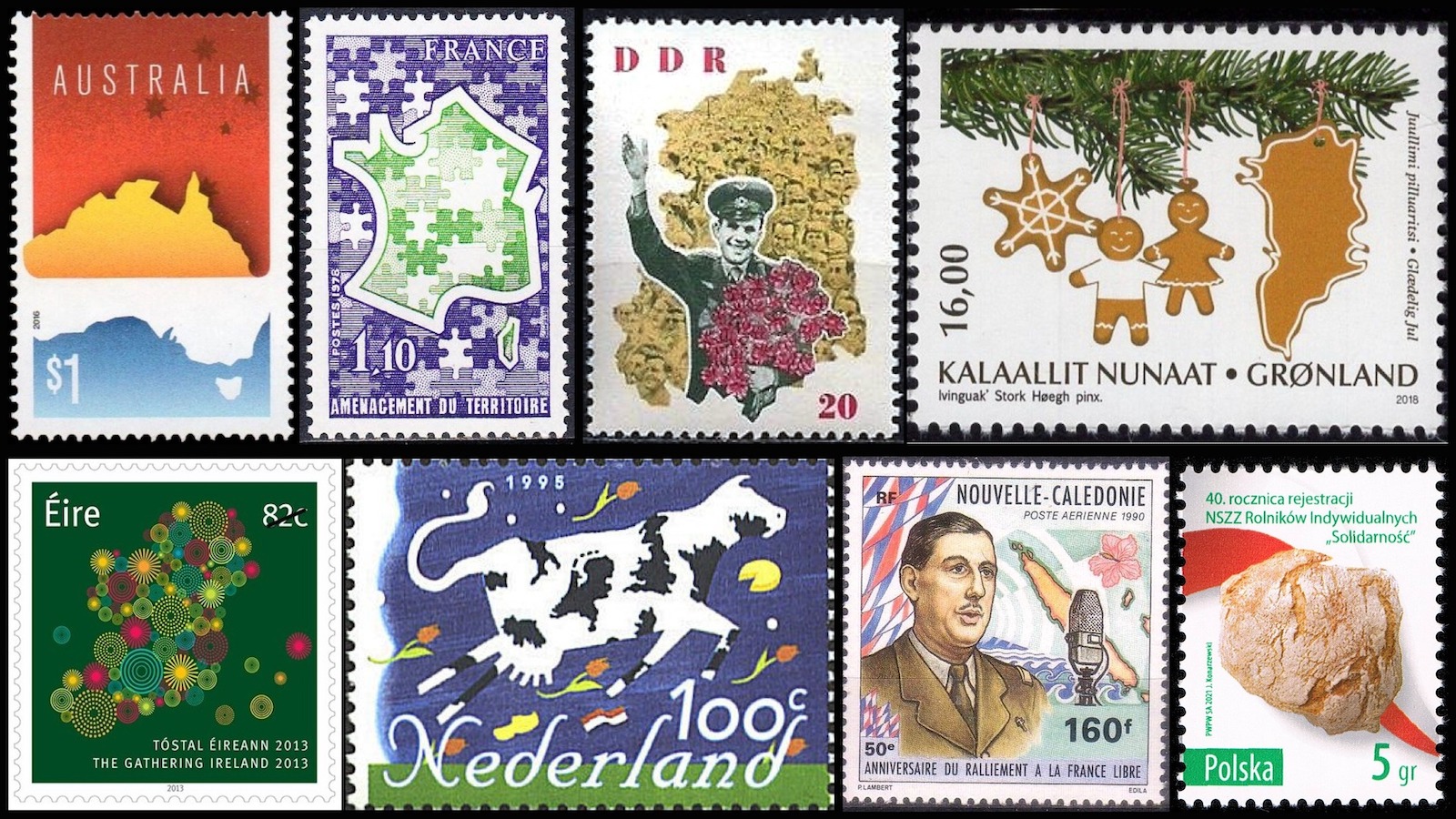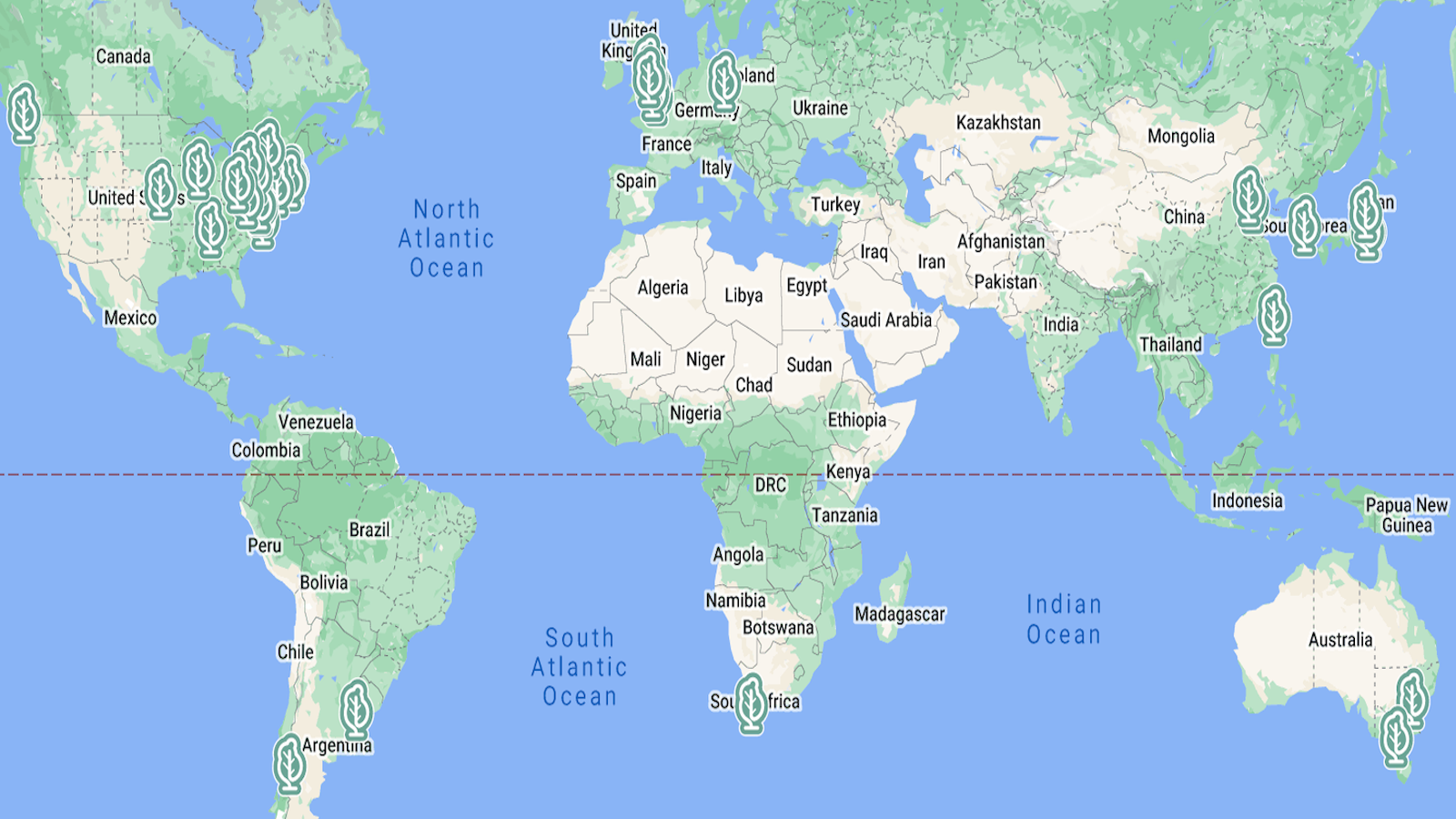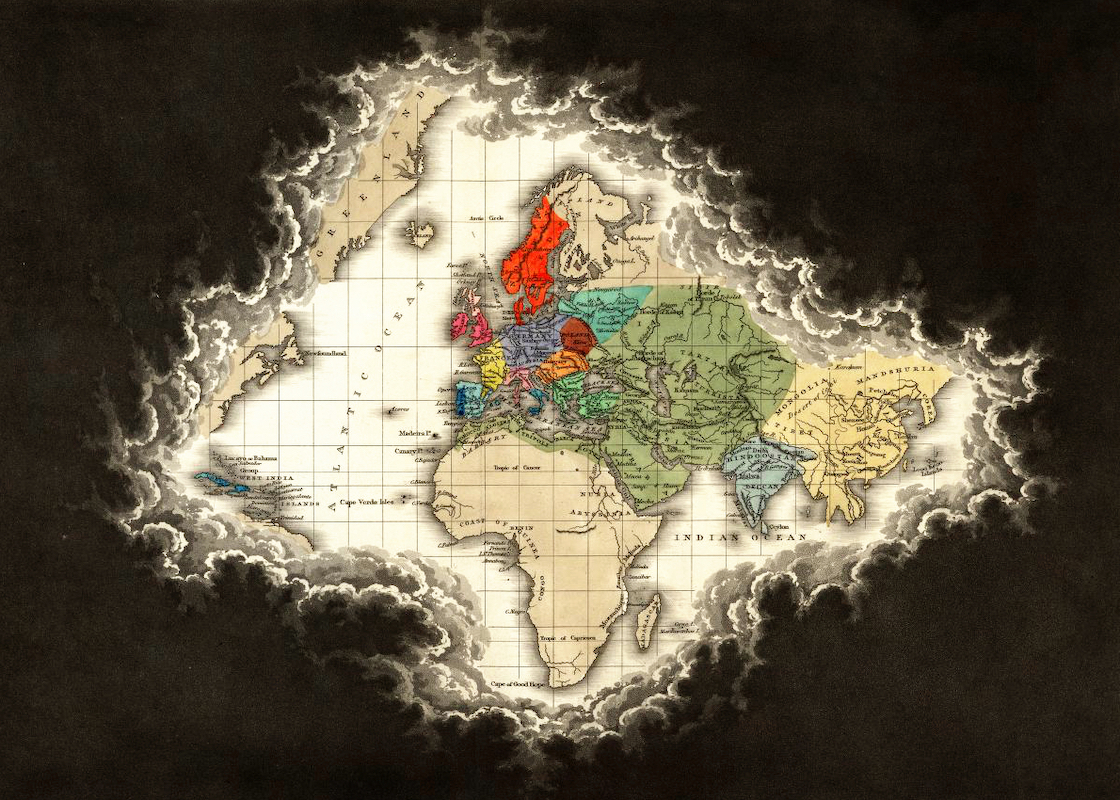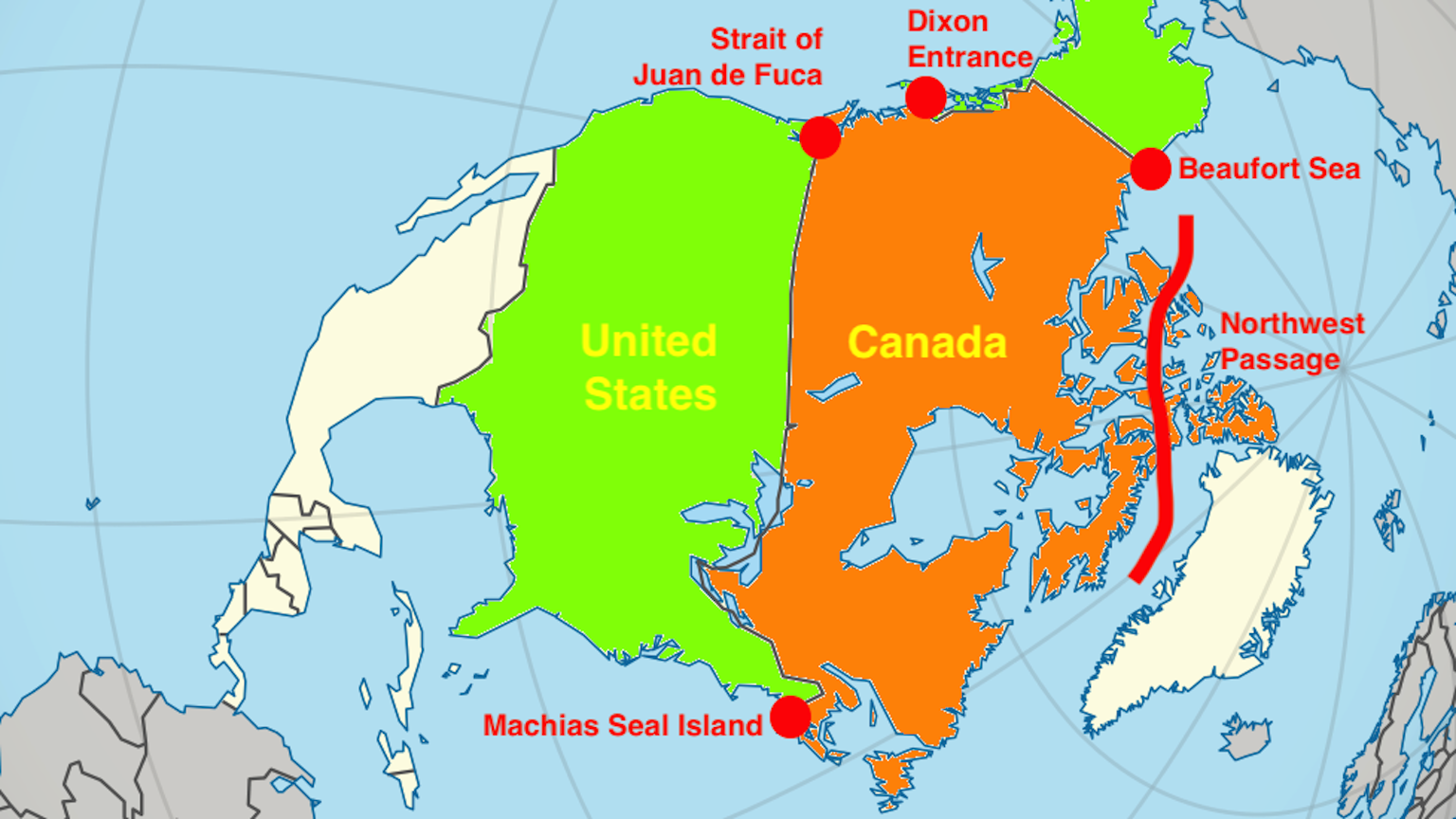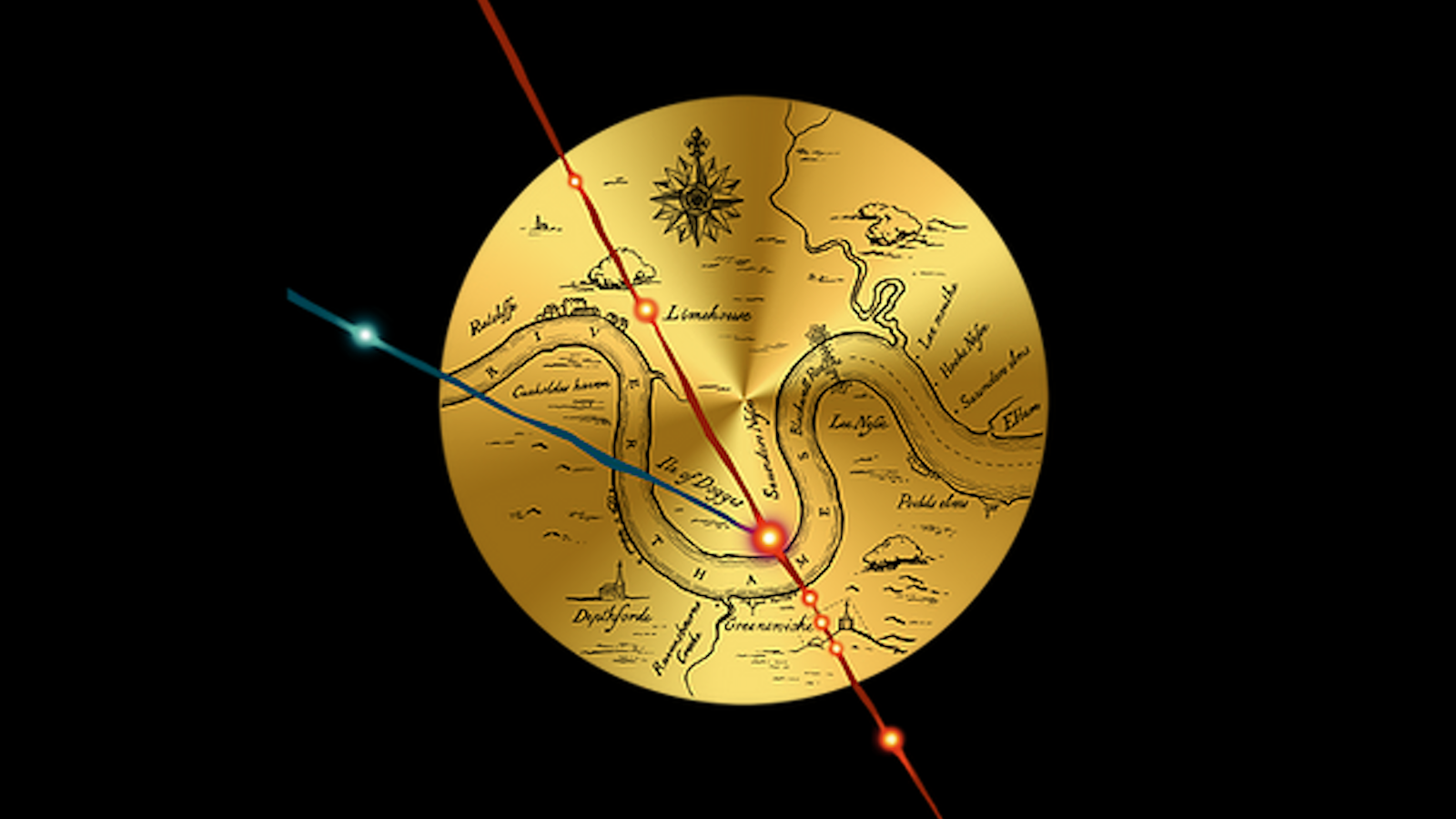Elizabeth II, Queen of the South Pole
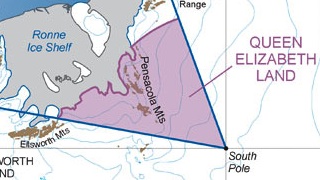
It’s a question on the minds of many, when the gift-giving season comes around again: What do you get someone who already has everything? The problem gets a bit more pressing if you’re the British Cabinet, and the Queen is coming to visit. Their solution? Clever: two gifts – 60 table mats, and a chunk of Antarctica, henceforth forever known as Queen Elizabeth Land. At least on British maps.
On Tuesday, 18 December 2012, the Queen (86) marked the end of her Diamond Jubilee year with a trip to 10 Downing Street, then-Prime Minister David Cameron’s official residence, to attend a meeting of the Cabinet. Despite her six decades on the throne, and the fact that Buckingham Palace, her official residence, is less than a mile away [1], it was the first time Elizabeth attended a Cabinet meeting.
Two reasons spring to mind for this curious lack of neighbourliness. First, it’s not that she never gets to see her Prime Ministers [2]. Britain’s unwritten constitution dictates that the PM makes his way once a week to Buckingham Palace for an audience with the Queen, during which she may ask questions and express her views on matters of state. To conceal this yawning gap between royal protocol and democratic principle, these meetings fall under the rules of the colloque singulier [3]: they are always private, no records are kept, and the contents remain confidential afterwards. And that explains the second reason: a return visit to a full Cabinet meeting would endanger confidentiality, and thus be much more problematic.
But there’s a third problem: regular visits by the monarch to the Cabinet would leave the door open for their direct influence on the political process, if by nothing else than the compliant fawning of elected officials towards a hereditary figurehead. Some aspects of the Queen’s visit in 2012 did indeed raise the eyebrows of some specialists in constitutional law (though hardly anyone else seemed bothered).
PM David Cameron next to the Queen – sitting in his armchair. (picture: Jeremy Selwyn via news.com.au)
For one, there was the applause and the reverent bows and curtseys [4] by government ministers as they greeted the Queen. Or the obsequious gifts with which they presented her (more on those below). Or the planned coincidence of Cabinet discussing, among more pressing matters such as Afghanistan and the economy, changes to the rules of royal succession [5]. Or, last but not least, the fact that she got to sit in the Prime Minister’s chair – the only one with arm rests – during her attendance of the Cabinet meeting.
Cameron, seated to the right of the Queen, remarked that “[w]e think the last time a monarch came to the Cabinet [in Downing Street] was in 1781 [6], during the American War of Independence,” adding: “I’m happy to report that relations have improved greatly since then”.
The interval of almost two and a half centuries between visits stresses the importance to the British constitutional arrangement that the monarch stay aloof of daily (in this case, weekly) politics. Which is why some observers thought Cameron’s invitation for the Queen to attend Cabinet was a constitutional faux pas.
Britain does not have written constitution, but rather has developed a modus vivendi between monarchy and democracy based on the trial and error process of history, and guided by certain key documents like the Magna Carta (1215) and the Bill of Rights (1689). The latter one stipulates the principle of separation of Crown, Government and Parliament. It was brushed aside by Eric Pickles, then-Secretary of State for Local Government, and unofficially David Cameron’s bruiser, in response to questions on the wisdom of the PM’s invitation: “We are her Cabinet, we operate for her. [… G]iven it’s her Cabinet, she can come any time she wants”.
The Queen for her part seemed more keenly aware of the situation’s potential pitfalls, and marked her status as strictly an observer [7] to the meeting by demonstratively pushing her chair back a few inches, as if to say: Go ahead without me, pretend I’m not here. She only spoke once at the Cabinet table: to request jokingly that the next Queen’s Speech [8] be “on the shorter rather than the longer side”.
Some of the 60 table mats gifted to the Queen by her Cabinet. (picture: AP via Metro)
Her Majesty’s visit itself was on the shorter side: after 30 minutes, she left the Cabinet room, where the meeting went on for another hour. Upon leaving, she was presented with 60 lacquered table mats – one for every year of her reign [9] – emblazoned with traditional scenes from Buckingham Palace. This could be construed as a bit tacky [10], but apparently the gift, paid for by a whip-round among Cabinet ministers, was suggested by the Queen’s aides. And, as Pickles (again) defended: “One can never have too many table mats”.
After her Downing Street visit, the Queen crossed Whitehall on foot with William Hague – her 22nd Foreign Secretary – to his Foreign and Commonwealth Office (FCO). Not to be outdone by his Cabinet colleagues, Hague then presented his sovereign with a gift the size of about 6.6 billion table mats [11].
He said: “As a mark of this country’s gratitude to the Queen for her service, we are naming a part of the British Antarctic Territory in her honour as ‘Queen Elizabeth Land’ […] The British Antarctic Territory is a unique and important member of the network of fourteen UK Overseas Territories [12]. To be able to recognise the UK’s commitment to Antarctica with a permanent association with Her Majesty is a great honour”.
The Queen was presented with a stone prised from the frozen wastes that constitute her newest territory, roughly equal to the southern third of the British Antarctic Territory (BAT).
Foreign Secretary William Hague unveiling Queen Elizabeth Land (r.) to Queen Elizabeth (l.) (picture: Alastair Grant/AP via The Guardian)
The BAT is situated south of 60˚S latitude and between 20˚W and 80˚W longitude, with those two meridians converging on the South Pole to give the territory its pizza-slice shape. It includes a handful of islands [13] and the Antarctic Peninsula [14] as well as the deep-frozen interior. Measuring 1.7 million km2 (660,000 sq. mi), the BAT is the largest of Britain’s overseas territories, but arguably also its least substantial. As may be gleaned from its main sources of income: a tax on the research scientists in the territory, and the sale of postage stamps.
The BAT was first claimed by Britain in 1908, and transformed into a British Dependent Territory in 1962. But with half a dozen other countries claiming their own slice of the South Pole, the potential for exploration to escalate into confrontation was huge. Hence the Antarctic Treaty of 1959, Article IV of which committed all 7 claimants [15] to freeze their claims (the legal term is abeyance). They, and the by now 50 signatories, have the right to establish bases anywhere on the continent, but for scientific research only.
The framework of the Treaty has kept Antarctic free from military bases, mineral exploitation and nuclear weapons, and managed fishing and tourism. It has also allowed some signatories to recognise each other’s claims without upsetting the broader agree-to-disagree framework. Notably France, Norway, New Zealand, Australia and the UK recognise each other’s claims – it helps that they don’t overlap, as is the case with the Chilean and Argentine claims [16], which overlap not just each other, but also the BAT.
Needless to say that Chile, Argentina and the UK do not recognise each other’s claims. Hence the FCO’s rush to point out that providing a hitherto unnamed bit of the BAT with a name did not affect the validity of the British claim either way, and that the status quo would remain as it was.
Map of Queen Elizabeth Land within the British Antarctic Territory (picture: Wikipedia)
Queen Elizabeth Land, at 437,000 km2 (169,000 sq. mi), is twice the size of the UK, and comprises the southern, narrowest third of the pizza slice. Its northern boundary is the frozen coastline, where the mainland touches the massive Filcher-Ronne Ice Shelf; and to the west thereof a latitudinal line separating it from Coats Land to the north. Its main geographic feature, apart from lots of snow and ice, are the Pensacola Mountains, running from north to south across the middle of the territory.
Henceforth, the name Queen Elizabeth Land will appear on all official British maps, but other countries are free to adopt or ignore the new name as they please. It’s highly unlikely that Chile or Argentina will mark the territory as Tierra Reina Isabel. Argentina especially has a bone to pick with Britain – and names are an important element in the dispute.
This year wasn’t just the Queen’s Diamond Jubilee, it was also the 30th anniversary of the short, sharp war between both countries over a group of islands north of the BAT, and east of Patagonia, Argentina’s Deep South. To the British, and those countries that recognise their claim to the islands these are the Falklands, while the Argentines, and those that support their claim know them as the Malvinas[17].
The naming of Queen Elizabeth Land prompted Argentina’s Foreign Ministry to lodge a formal complaint with British ambassador John Freeman in Buenos Aires, expressing their country’s “firmest rejection of the recently announced pretension of the government of the United Kingdom of Great Britain and Northern Ireland of naming an area of the Argentine Antarctic sector”. As far as the Argentines are concerned, the naming is a reflection of “anachronistic [British] imperialist ambitions that hark back to ancient practices”, an infringement of the spirit of the Antarctic treaty – and clearly linked to the fight over the Falklands/Malvinas. The previous slight to Buenos Aires regional ambitions was the posting, last March, of Prince William to the Falklands in his role as RAF search-and-rescue pilot.
All this aggravation for – what? Compared to coastal Antarctica, home to penguins, seals, and most of the continent’s research stations [18], the BAT’s hinterland is a sterile waste, landlocked and covered in a mile of ice. Even now, in antipodean summer, the thermometer struggles to reach -20˚C. Nothing lives here, and nobody survives there for very long. Robert Falcon Scott, who lost the race to the South Pole to Roald Amundsen exactly a century ago this year, died en route back to the coast, but not before exclaiming: “God, what an awful place!” It is so inhospitable that most of it was only charted from the middle of the 20th century, by air photography.
One wonders whether, like his boss David Cameron, William Hague didn’t also make a faux pas by naming such a desolate, uninviting place for the Queen. She could take it as an insult, especially with so many other, nicer places named after her. Earlier this year, also in recognition of the Diamond Jubilee, the British parliament renamed the Clock Tower housing the Big Ben the Elizabeth Tower. Across Parliament Square, the Queen Elizabeth II Centre houses exhibitions, official inquests and press conferences. And around the Commonwealth and beyond, countless schools, hospitals, streets, squares, bridges, buildings and monuments are named after her.
As for prominent geographic features, there are the Queen Elizabeth Range and the Queen Elizabeth Islands [19], both in Canada. Curiously, and this might explain the apparent lack of enthusiasm on the monarch’s part, two segments of Antarctica already bears her name. In 1931, when her grandfather George V was still on the throne, a piece of Antarctica was named Princess Elizabeth Land by Sir Douglas Mawson. It is now in the Australian sector of the frozen continent. And then there’s another Queen Elizabeth Range, also in Antarctica, named by J.H. Miller in 1957.
A map of the 7 claims on Antarctica, frozen since 1959 (picture: Mount Holyoke College)
But maybe what the Queen wants, and feels, doesn’t enter into it. As Klaus Dodds, professor of geopolitics at Royal Holloway [20], remarked: “Place-naming is one of the most powerful ways of reinforcing sense of your ownership of a territory”. According to Dodds, the naming is part and parcel of Britain’s assertion of its ‘strategic presence’ in the most contested part of the Antarctic: “With the absence of an indigenous human population, maps and charts have always been instruments of power in the polar context.”
“According to the Composite Gazetteer of Antarctica, Britain was responsible for nearly 5,000 names, with the US leading the pack with over 13,000. New Zealand put Maori place names on its maps of its polar territory, the Ross Dependency. Even smaller polar operators such as Bulgaria are responsible for hundreds of place names.”
Argentina’s postal assertion of possession, not only of a slice of Antarctica, but also of the Malvinas and other islands. (picture: 123RF)
“However, there are 3,000 places that have multiple names through translation/transliteration, or different names. The Antarctic Peninsula is called Graham Land (UK), Tierra San Martin (Argentina), Palmer Peninsula (US) and Tierra de O’Higgins (Chile). In 1964, the UK and US agreed to a new strategy, which effectively divided the peninsula into two parts and named accordingly. The northern section was called Graham Land and the southern portion became known as Palmer Land on their maps. So agreement is possible – but the US and UK were, and remain, close allies.”
The term ‘Queen Elizabeth Land’, however benevolently approved by the (British) Antarctic Place-Names Committee, won’t get such a warm welcome in Argentina or Chile.
So perhaps the Queen now has a few more reasons never to visit a Cabinet meeting again: not only would you might risk having some horrible part of the world named after you – in the process further upsetting an already unfriendly nation – it also turns out you can have too many place mats.
A set of stamps released by the BAT, showing the British claim (picture: Regional and Mesoscale Meteorology Branch of NOAA/NESDIS)
For more on the strange cartography of the Antarctic, see #88 on Neuschwabenland, #207 on the frontage principle, and #575 on Magallanica.
Strange Maps #591
Got a strange map? Let me know at[email protected].
_______
[1] Under five minutes in a chauffeur-driven, police-escorted royal Bentley. ↩
[2] Twelve Prime Ministers in all have served Queen Elizabeth II, beginning, incredibly, as far back as Winston Churchill (1951-’55), followed by Anthony Eden, (1955-’57), Harold Macmillan (1957-’63), Alec Douglas-Home (1963-’64), Harold Wilson (1964-’70, and again 1974-’76), Edward Heath (1970-’74), James Callaghan (1974-’79), Margaret Thatcher (1979-’90), John Major (1990-’97), Tony Blair (1997-’07), Gordon Brown (2007-’10) and David Cameron (2010-). ↩
[3] Strict confidentiality such as it exists between doctor and patient, or between penitent and confessor. ↩
[4] by the gentlemen and ladies, respectively. The female curtsey (from courtesy) involves a bending of the knees as well as a bow of the head. ↩
[5] The new law will allow the as yet unborn child of Prince William and Kate Middleton, now in her third month of pregnancy, to remain third in line to the throne – even if it is a girl. Under current rules, a subsequent son would overtake an older girl in the line of succession. ↩
[6] That monarch was George III (r. 1760-1820), who on that occasion also was attending rather than presiding the Cabinet. The last monarch to chair a meeting of his ministers was George I (r. 1714-’27). Another George, Elizabeth’s father George VI (r. 1936-’52), on one occasion attended a War Cabinet meeting, which was held outside Downing Street. ↩
[7] As part and parcel of her political neutrality, the Queen can neither vote nor stand in elections. ↩
[8] Read each year by the monarch at the opening of Parliament but written by his or her government. ↩
[9] The Queen is at present the second-longest reigning British monarch, after Queen Victoria (r. 1837-1901, or 63 years and 216 days). Elizabeth will break the record on 9 September 2015. ↩
[10] I guess it’s not tacky if you actally live there. ↩
[11] As calculated in this article on the Independent website. ↩
[12] Until 2002 called British Dependent Territories, these fragments of Empire remain under British rule, without being part of Britain proper. They are (in Europe:) Gibraltar; Akrotiri and Dhekelia; (in the Caribbean and North Atlantic:) Anguilla; Bermuda; the British Virgin Islands; the Cayman Islands; Montserrat; the Turks and Caicos Islands; (in the South Atlantic:) the Falkland Islands; St Helena, Ascension and Tristan da Cunha; South Georgia and the South Sandwich Islands; (in Oceania:) Pitcairn; (in the Indian Ocean:) the British Indian Ocean Territory; (in Antarctica:) the British Antarctic Territory. ↩
[13] The South Orkney Islands, the South Shetland Islands, and Alexander I Island – all also claimed by Argentina, and the latter two also by Chile. ↩
[14] The northernmost protrusion of the Antarctic land mass, and the place where most visitors to the area make landfall. It in fact consists of several islands, linked by frozen ice. ↩
[15] Argentina, Australia, Chile, France, Norway, New Zealand and the UK. Together, they lay claim to about three quarters of the Antarctic land mass. The US, Peru, South Africa and Russia reserve the right to stake a claim at a later time. ↩
[16] Called, respectively, Provincia de la Antártica Chilena and Antártida Argentina. ↩
[17] The name Falklands was given to the islands by the British captain John Strong after a visit in 1690, for Anthony Carey, 5th Viscount Falkland, who was Lord of the Admiralty for a few years at the end of the 17th century. The Spanish name Malvinas derives from a French original, Malouines, given in 1764 by the French explorer Louis Antoine de Bougainville, for the island’s first settlers, fishermen from the French port of Saint-Malo. Each side considers the other side’s name a propaganda term. ↩
[18] A total of 30 nations operate about 70 research stations in Antarctica, with personnel numbering about 1,000 in winter and up to 4,000 in summer. ↩
[19] Formerly the Parry Islands, this archipelago was renamed after Elizabeth upon her coronation. Located at the very north of Canada, they are almost the antipodes of Queen Elizabeth Land, on the opposite side of the planet. ↩
[20] Klaus Dodds is also theauthor of ‘The Antarctic: A Very Short Introduction’. More of his opinion on Queen Elizabeth Land here in the Daily Telegraph. ↩







